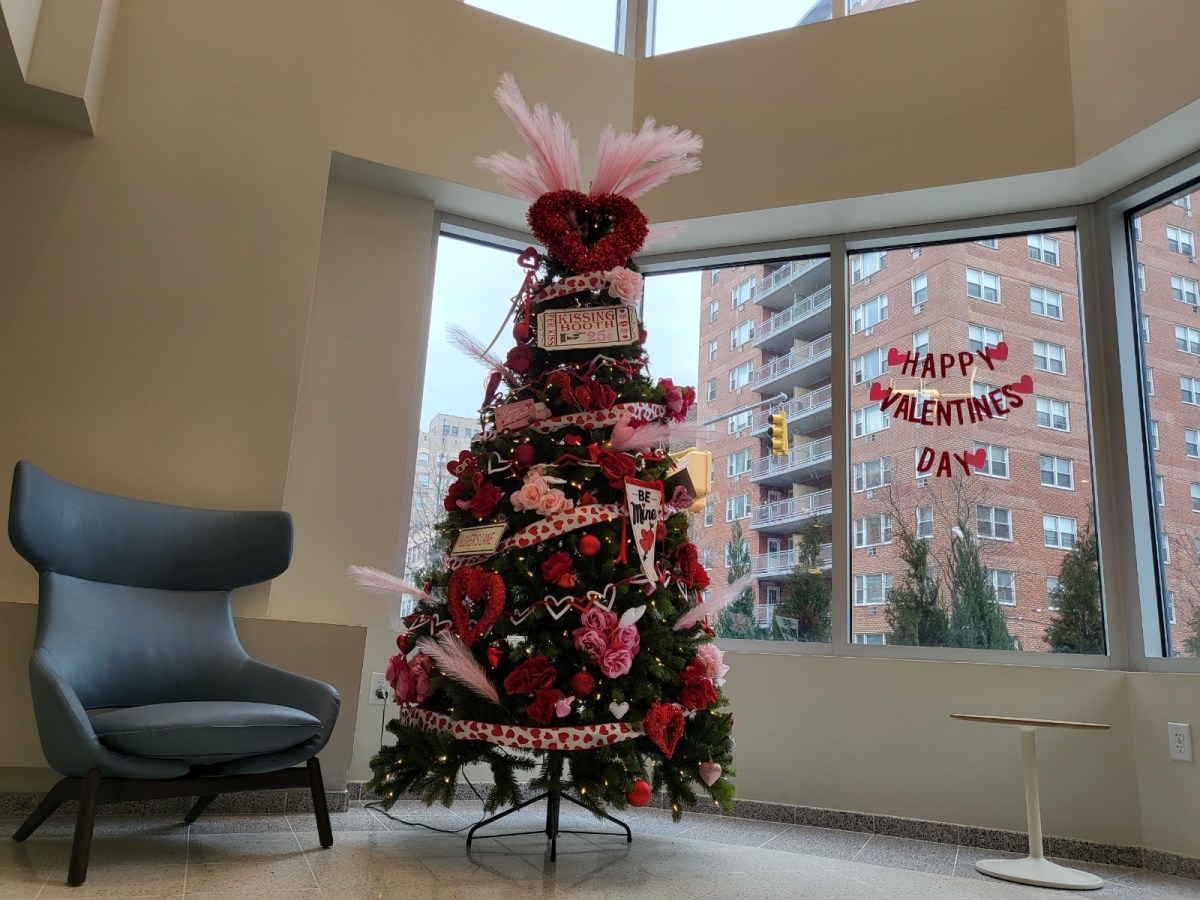The Mieles, an eight-story supportive housing building in Jamaica operated by the Transitional Services for New York, Inc. (TSINY), has become the talk of the neighborhood since its Christmas tree was redecorated to a Valentine’s Day theme. It has brought joy and intrigue to both passersby as well as the building’s tenants, 42 of whom came from homeless shelters.
Many residents of this affordable housing development were either previously homeless or were seniors in need of a place to live, so it has been difficult for these tenants to build trust after spending so much time on the streets or in shelters. However, meeting together to come up with ideas as to what kind of decorations they’d like to see on the tree has helped some of them start to open up more.
With many of these formerly homeless tenants having previously experienced trauma, these exercises present a good opportunity to get them into a healthier mindset as they look toward finding work and/or education.
According to Mieles Program Director Nicole King, the idea came about thanks to a comment from TSINY CEO Dr. Larry Grubler. During a January admin meeting, Grubler mentioned a television show that inspired King to keep the tree up year-round. King then went to Michaels and Dollar Tree to get Valentine’s Day decorations for the Christmas tree in the library room of The Mieles.
“It’s making the tenants feel like this is their home,” King said. “It’s something to be proud of. It’s a good thing people are talking about it. It’s positive and they’re thinking about stuff for the next month. They’re getting to know each other and feeling really good about themselves.”
King and the tenants came up with holiday themes for every month of the year from February to December, except for August. February is Valentine’s Day; March will be St. Patrick’s Day; April will be Easter; May is Memorial Day; June is Juneteenth; July is Independence Day; September is Labor Day; October is Halloween; November is Thanksgiving; and December is Christmas. While they have not yet finalized an idea for August, one under strong consideration is a summer theme. Additionally, a couple of ideas for January include keeping the Christmas theme throughout that month or having a New Year’s theme.
The fact that the tree helps the tenants in making this place feel like home to them is very important as they transition from shelters into their units. This psychological transition can go a long way toward them being more comfortable as they pursue work.
“There were [initially] a lot of trust issues,” King said. “Coming from the homeless shelter, you can’t leave your stuff down. You’re very guarded. You don’t get close to people. It took some time for them to get comfortable and trust others. Now they’re really opening up and getting to know each other. They’re socializing. They feel more comfortable. They’re letting loose a little bit. It’s so great to see.”
King expects there to be much more input for the St. Patrick’s Day tree decorations compared to Valentine’s Day, as many of the tenants are much more comfortable sharing their ideas now. She intends to sit down with them and take each of their ideas. Since she viewed the Valentine’s Day tree designs as more sporadic, King has reason to believe the St. Patrick’s Day tree will be more planned out. For example, one tenant has already recommended gold pots underneath the tree.
Due to the positive impact that this tree project has had on the tenants, King is strongly considering making this a tradition for the building rather than just being throughout the year. She feels this really helps to put the minds of the tenants at ease as they go through such a major transition. Even the quietest and most apprehensive of tenants have contributed to coming up with decoration ideas for the tree.




































